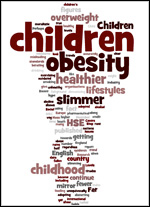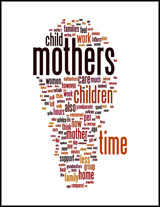BigMouth
Food and pleasure
(From Lionel Tiger's 'The Pursuit of Pleasure')
Human beings are like other mammals in that they often receive their first food directly from their mother's body. But it is difficult to imagine any other mammal having such variety, complexity, and intensity of experiences surrounding food. No other creature on earth enjoys as much as people do so many kinds of pleasure from food – simple, complex, real, symbolic, basic, luxurious.
A Martian surveying the planet's cafeteria while the daily human meal is served would surely be stunned by its size and overwhelming variety. Much of the menu is determined by climate, geography, cultural tradition, and hunger. Nevertheless, people enthusiastically select an immense amount of what they eat and drink because they enjoy it. From the fiery peanut stew poured over pounded manioc in Lagos to the fried cubes of bean curd glistening with sweet-spicy sauce in Szechwan to a mousse of flounder garnished with specks of black caviar in Brussels, food is interesting, entertaining, almost flagrantly varied. It is an absolutely central feature of vivacious life.
Transactions surrounding food and drink are the glue of the social system. Few important events, even funerals, fail to become the occasion of a toast, a meal, a snack – of taking something from the environment and cooking, spicing, slicing, brewing, or fermenting it, and then placing it into the mouth. A Thai custom is that before a person dies he will collect several dozen or so of his favorite recipes in a booklet to be distributed at the funeral.' Hence the feast of delicious food continues even after death. This love of the legacy of food surely supports the vibrantly engaging food of Thailand. 'I he dead literally feed the living as skilfully as they can.
The Mouth Organ Is Not Silent
The mouth is the organ of speech. But it is also the recipient of a vast sensual diplomacy. No other organs, not even the genitalia, are the subject of such concentrated and varied attention, experimentation, etiquette, and congeniality. Precisely in materialistic societies – which have generated bountiful wealth – people at- tend public feeding places at which they uneconomically consume food whose cost to them is several times the cost of the ingredients themselves. They are voluntarily paying for the pleasures provided by the cooks, servers, designers. They are being pleasured by taste, originality, perhaps a sense of the exotic and luxury, by the intimate architecture of their experience, and, centrally, by the hubbub of social life that is the mark of a successful restaurant.
No one except a tyrant enjoys an empty restaurant. The cool exclusivity it can provide is far less important than the sturdy, busy civility of a popular bistro or the intense clatter of a dim-sum parlor or the easy, familiar affability of the local diner. The pleasures of the mouth seem to be enjoyed best amid a community of acceptable folk.
When people are prosperous and have the choice, they increasingly choose public dining over private. In 1990, US families that earned over $70,000 a year spent an average of $3,500 on restaurant meals. This is $400 more than the $3,100 they bestowed on their grocers. Perhaps earning all that money is time-consuming and these people are too pressed for time or unskilled to prepare for them- selves the standard of cuisine they expect from the world. So they pay others to offer it to them. But if they are so short of time, why do the costliest meals usually take the longest'? Since dinner out is often the evening's total entertainment, we have to assume people are choosing to enjoy food amid a convivial public.
Nevertheless, they are also enjoying clearly physical pleasures. I have already described how humans evolved to eat almost any- thing. We are omnivores with adaptability and some discernment. This is obviously one reason for our ability to migrate to virtually every corner of the world and still find dinner. With the same assertive bio-flair of the female rabbit who ovulates when she copulates, not only are we able to eat a great variety of foods, but we also enjoy it. The taste buds are an effective survival tool. They draw us to enjoy what we need to survive. This is presumably also why, once basic hunger is allayed, people appear to be willing and able to sample a considerable variety of different foods and different preparations of them. Even a society traditionally thought to be rather insular, Japan, newly boasts in its major cities a rich and accomplished sample of styles of cooking from dozens of countries.
The aesthetic and sensual pleasure people enjoy from food and drink is utterly clear. And novelty, too, is attractive: the latest style, the latest tradition, the latest look – all draw the diners. Elegant variation is the staple of the nation's menu. This relatively recent trend has its limitations, however. As Paul Rozin of the University of Pennsylvania has suggested, it is the very fact that we are omnivorous that allows us on one hand to sample this elegant variation but on the other to suffer possible discomfort or even death caused by unknown foods. Food can also be a weapon, so there is some advantage in being familiar with it, in order to detect when it may be poisoned. An alternative protection in paranoid or dangerous communities is to employ a taster – a common if perilous occupation in despotisms. For example, Saddam Hussein of Iraq employed a taster who was his chef's son.
Another limitation on choice of food and how it is prepared has to do with contamination and disease. Many elements of the Jewish system of kosher food have been related to health and avoiding potentially hazardous foods, such as shellfish and pork, where refrigeration was unavailable. The widespread use of wine with food reflects the simple fact that fermentation turned grape juice into a safe drink, which water may not be; wine was also used as a disinfectant in surgery. And concern about contamination can suffuse an entire society. For example, a principal function of the Indian caste system is to regulate who may prepare the food that particular castes may consume. Thus, Brahmins may only eat food prepared by other Brahmins. While there are a host of religious, attitudinal, and economic factors in the system overall, one core historical function was to try to cope with the vital issues of health and cleanliness in a tropical environment which heightens their deadly importance.
The human menu has changed for a variety of reasons, such as more effective distribution of conventional seeds, agricultural information, and products, as well as the ecological imperilment of various flora and fauna. Since the advent of agriculture and now industrialization, people have actually reduced the variety of foods they eat. Because of technical and cultural limitation of what they can or want to produce, people use only some fifty animal and six hundred plant species out of the thousands that hunter-gatherers had available to them and evidently used. There is a compromise between fewer raw materials and a greater number of variations in preparing them. More has to be done with less. Art and imagination compensate for less natural variety.
A good simple case in point is tofu, or bean curd. This is a foodstuff that is laughably uninteresting in its original state, so bland and plain that, as I've observed elsewhere, "it seems the ideal product of a futuristic dictatorship committed to the denial of fun – the perfect food for a country managed by depressed chemical engineers who relish standardization." Yet this simple substance becomes an extraordinary array of sharply different and attractive foods in the quick hands of oriental cooks. Here is an example of my version of Romer's Rule (which is that animals adapt to change through small mutations, such as acquiring darker skin color when a habitat becomes dry and brown, rather than through major changes, such as developing wings to avoid a predatory enemy). Cultural variation "takes up the slack" to maintain a common and satisfying human balance with the environment and within it. The elegant variation produced by cooks compensates for the loss of sensitivity and access to the plethora of foods that were available to the hunter-gatherer. Culture replaces nature, using "all-natural" ingredients.
Many elements in the food chain produce pleasure. Some are obvious, some are unexpected. It's obvious that people enjoy sharing the food they have – cooking it for one another, exchanging it, delighting one another with it. Less obvious but also potent is the pleasure evidently involved in sharing the acquiring of it – particularly in hunting and fishing, but also in gardening and shop- ping, in what the ecologist-farmer Wendell Berry has called "the frankly emotional… pleasures of nature and pleasures of work."' A royal hunting ground or prized salmon river is as agreeable and interesting a feature of life as a jumbly farmers market in Siena or one of the strikingly skilful food shops – most large cities have at least one or two – in which the appearance of the items offered is almost as promising as an advertisement for fireworks. Or, the plea- sure may be more austere, as in the locally famous cheese shop in Cavaillon where in the right-hand window trim rounds of new subtle goat cheese are displayed on golden straw as sparely as jewels.
No, there's a world in food, a world of food, a clear-cut world of connection between the body and the world. There's a seasonality, a scarcity, a harvest, a time for the perfect lingonberry or langoustine or corn or shad roe or oyster. Two or three or four or more times a day, a fortunate primate can investigate a library of edible and potable options. The menu will depend on climate, purse, taste, avidity, leisure, the company, health, fashion, taboo – as many factors as matter in anything. Nonetheless, however the decision is made, finally food will be brought to the mouth and ingested. A verdict of some sort will be rendered. Life will be sustained for some more hours. Another course will have been enjoyed in a lifelong dinner.
You see it when construction workers turn the edge of their work site into a dining room. All of them are eating a different thing as they sit on the sidewalk, on stacked Sheetrock, on an emerging wall. What people eat is as different as their fingerprints. The restaurant menu is a proof of human variability, of the expansiveness of what people enjoy. Why else is it so big? The average modest New York neighborhood Chinese-restaurant lunch menu for $4.25 boasts some fifteen choices of entree, three kinds of soup, three kinds of rice, and often a choice between a soup and an egg roll. Mathematically, many choices for $4.25. Exactly 710. The restaurants do well with this. People enjoy the food, the price, the choice, the whole operation.
This is quite comprehensible, when adults are doing the choosing. Why do infants prefer some foods to others? As I have already noted, it perplexed me that my child preferred one kind of pureed vegetable to another. No one earnestly taught him, because no role-model adult consumed such charmless muck. So whatever could be the reason to choose between the squash with rice and peas with potatoes? Simple. Preference. Pleasure. The beginning motions of a trajectory of taste. He would sooner not eat than eat something he would sooner not eat.
Martin's Herring Store
Why is a professional anthropologist going on so about food? In a study of pleasure one has to. I have other reasons too. I will elaborate. I begin with my childhood, because my father owned a grocery store in Montreal. His name was Martin, his store "Martin's Herring Store." His claim to expertise with this highly adaptable swimmer was presumably a way of attracting the largely Jewish Eastern European immigrant customers he sought. For them this tasty and durable fish had played a historically significant role in their diet in "the old country." So cavernous barrels of various styles and intensities of preserved small fish buttressed the back of the store, presumably to draw the aficionados through the rest of the offerings on their way. There were also tubs of olives, many kinds of beans, dried fruits to compose the tureen of compote, slabs of astonishingly tasty halvah, intense kosher sausages, and brooding rounds of cheese. It was a fascinating world to a child, of edible items bearing with them the tastes and history of mysterious other places.
Then the store prospered. It was gentrified to "Martin's Self- Service Groceteria." Now nearly all the items were packaged except for fruits and vegetables, which I would occasionally be permitted to buy wholesale from the French-Canadian farmers at the Saint Lawrence market, a brief bicycle ride away. The best was the corn, which erupted in August, plush and plenty. Everyone became a corn connoisseur for a few weeks. Then the store was driven out of business by the changing residential patterns of immigrants. A Greek man bought the lease.
Food was both business and pleasure. I seem to have carried on the family trade in this respect. Having been on the business end of the cash register for a while, it has always seemed to me to be a matter of social responsibility that people be fed good, tasty food when they pay for it, so I have always regarded good and fair restaurants and shops as a major communal resource. When I lived in London, I would frequently submit critiques of restaurants to The Good Food Guide, which was first established by gourmet English socialists to help overcome the legendary indifference of their compatriots to the pleasures of food; as I have already boasted, eventually I was asked to become a covert inspector for the Guide.
This personal history has helped me establish a baseline for discussing food, which is that its taste, its nutrition, its value, and the ambition and accomplishment of its preparation are all vital features of a community. Shops, restaurants, markets super and simple, compose a major part of the array of resources with which a community deals with daily life. Along with its drinks, such as wines and beers and other spirits, the food of a community is one of the easiest, most sensible, most interesting, and least antisocial means of enjoying pleasure.
There is a politics of food, just as the matter of the enjoyment of sex has forever – at least since Eden, Mother Eve, and apple-of-knowledge pie – been a political question. Is food (and drink, its kissing cousin), like sex, a provider of pleasure that must be curtailed or somehow controlled? Is it possible that the contemporary drama about food as a source of personal extermination is nothing but a new version of the sermons about hellfire and brimstone that surround the stimulation of genitalia? Is Mephistopheles about to suborn the mouth as well as the penis and vagina to do his morally violent worst? Do the bacon and eggs – fat, cholesterol, no fiber – of the next day's breakfast correspond in turpitude to the lubricious one-night stand? Are the morning-after eggs Benedict the moral equivalent of the strip-down, tumble-down night before?
If I pose these questions rather dramatically, I do so within the graphic context of the history of an organism that managed to make it shameful in some beds for husband and wife to see each other's nude body; that legislated prohibition of any alcohol at all; that currently insists that Iranian women, among others, conceal even their faces in public. Why should food be different? Perhaps it is – or so it seems from the success of McDonald's, which provides fatty cooked animal protein with vast success and whose double-humped-M logo surely owes more than a smidgen to the image of heroic breasts: the distillation of Dolly Parton. Then again, perhaps it does not. But perhaps the mammal remembers.





